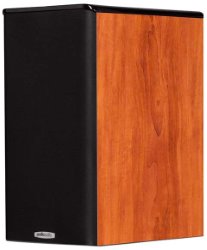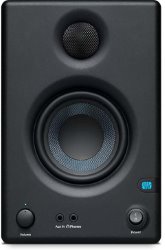Polk Audio TSi200 vs. Presonus Eris E3.5
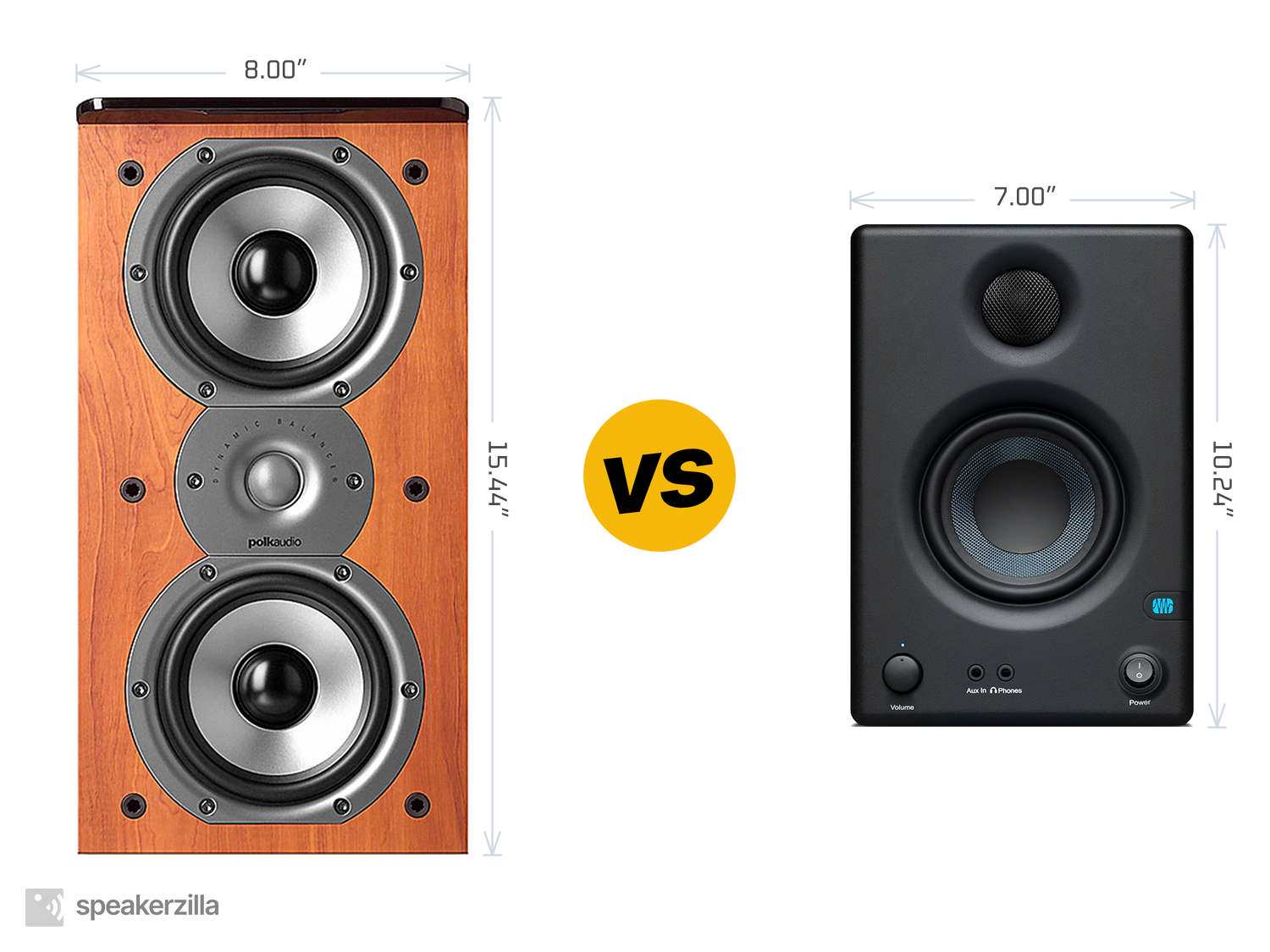
| Polk Audio TSi200 Bookshelf Speakers | Presonus Eris E3.5 3.5” Near Field Studio Monitor |
| MSRP | |
| $300 | $100 |
| Dimensions (H × W × D) | |
|
15.44” × 8.00” × 11.75” 392mm × 203mm × 298mm |
10.24” × 7.00” × 7.68” 260mm × 178mm × 195mm |
| Power Type | |
| Passive | Powered |
| Frequency Response | |
| 50-24,000 Hz | 80-20,000 Hz |
| ASR Score | |
| n/a | 1.5 |
| ASR Score w/Subwoofer | |
| n/a | 4.3 |
|
Amazon.com
|
Amazon.com
|
Key Takeaways
TLDR Summary: Polk Audio's TSi200 bookshelf speakers offer a warm, expansive soundstage with dynamic bass, thanks to their larger drivers and passive design, tailored for casual listening in a home stereo setup. The PreSonus Eris E3.5 studio monitors, on the other hand, provide a more neutral and precise sound signature with smaller drivers, geared towards accurate audio reproduction for critical listening or multimedia creation in a near-field setting. Both cater to different audiences; the TSi200 excelling in room-filling sound for audiophiles, while the Eris E3.5 suits content creators and those who prefer a flat response for detailed audio work.
Speaker Comparison
When it comes to outfitting a listening space with quality speakers, the search can lead you down many paths. Today, we find ourselves comparing two different breeds of sound reproducers: the Polk Audio TSi200 Bookshelf Speakers and the Presonus Eris E3.5 3.5” Near Field Studio Monitor. The former caters to the hi-fi home audio enthusiast, while the latter serves the precision-driven audio production world. It's a matchup that pits the warmth and richness of a home stereo against the accuracy and detail of a studio monitor.
Design and Build Quality
The Polk Audio TSi200 boasts a classic bookshelf design that's at home in any traditional setup. The speakers come adorned with a wood grain finish, giving them a timeless look that exudes a sense of warmth. They're solidly constructed, with a heft that speaks to their quality. On the other hand, the Presonus Eris E3.5 has a more modern and functional aesthetic, with a compact form factor that makes them ideal for desktop use. They might not have the same visual appeal as the TSi200, but they're built with the studio environment in mind, featuring knobs and tuning options that the Polk lacks.
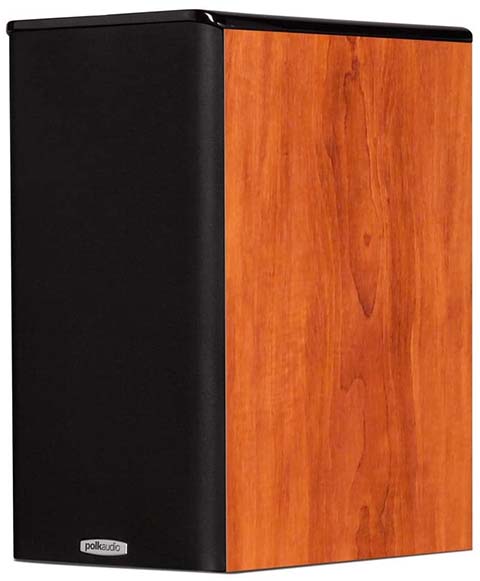
 (at Amazon.com)
(at Amazon.com)Sound Quality and Performance
Sound is where these two sets of speakers diverge quite markedly. The Polk Audio TSi200 is designed for a broad soundstage, aiming to fill the room with rich, detailed audio. The bass response, while not earth-shattering, is respectable for a speaker of its size and delivers a punch that pairs well with the clear mids and crisp highs. Conversely, the Presonus Eris E3.5 studio monitors focus on flat, accurate sound reproduction. This means they're specially tuned to provide a true representation of the audio as it was recorded, with no embellishment or coloration - a critical feature for audio production and mixing.
Usability and Versatility
Everyday usability can set speakers apart just as much as sound quality. The TSi200s are passive speakers, which means they require an external amplifier or receiver to drive them. This can be a boon for audiophiles who like to tailor their sound with different amplification or receiver options. In contrast, the Eris E3.5 speakers are self-powered, or active, with built-in amplification. This makes them an all-in-one solution, ideal for smaller spaces or for users who prefer not to invest in additional audio equipment.
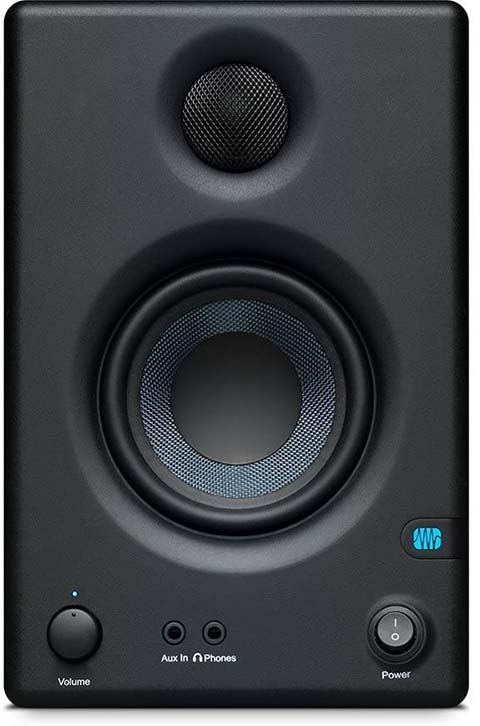
 (at Amazon.com)
(at Amazon.com)Moreover, the Polk Audio TSi200, being more of a traditional home audio solution, pairs nicely with a wide range of home entertainment setups. They're well-suited for music listening, movies, and TV. The Presonus Eris E3.5, while excellent for audio work and critical listening, also doubles adeptly as a high-quality option for gaming and multimedia consumption, thanks to their balanced sound and the detailed stereo imaging they offer.
Compare to similar speakers
Connectivity
Connectivity is another key consideration. The Polk TSi200, in keeping with their traditional design, offer straightforward speaker wire connections. This allows for a secure link to your amplification but no direct connection to source devices without a receiver or amp. The Eris E3.5 monitors boast a range of input options, including 1/4" TRS and RCA inputs, making them more flexible for direct connections to a variety of audio sources, such as interfaces, mixers, or even directly to a computer or smartphone with the appropriate adapters.
In closing, choosing between the Polk Audio TSi200 Bookshelf Speakers and the Presonus Eris E3.5 Near Field Studio Monitors comes down to your intended use and personal preferences. The TSi200s excel in a traditional home audio environment where their larger drivers deliver a more expansive soundstage. Meanwhile, the Eris E3.5 monitors cater to those seeking precision in sound, whether for content creation or for an authentic listening experience. Either way, both sets of speakers make a strong case for inclusion in their respective domains, and your final decision will hinge on whether you value the cozy embrace of a well-rounded home speaker or the unvarnished truth of a studio monitor.
- Polk Audio TSi200 reviews and FAQs
- Presonus Eris E3.5 reviews and FAQs
Check Current Prices: |
|
|
Amazon.com
|
Amazon.com
|
Affiliate Disclosure: As an Amazon Associate, we earn from qualifying purchases.
